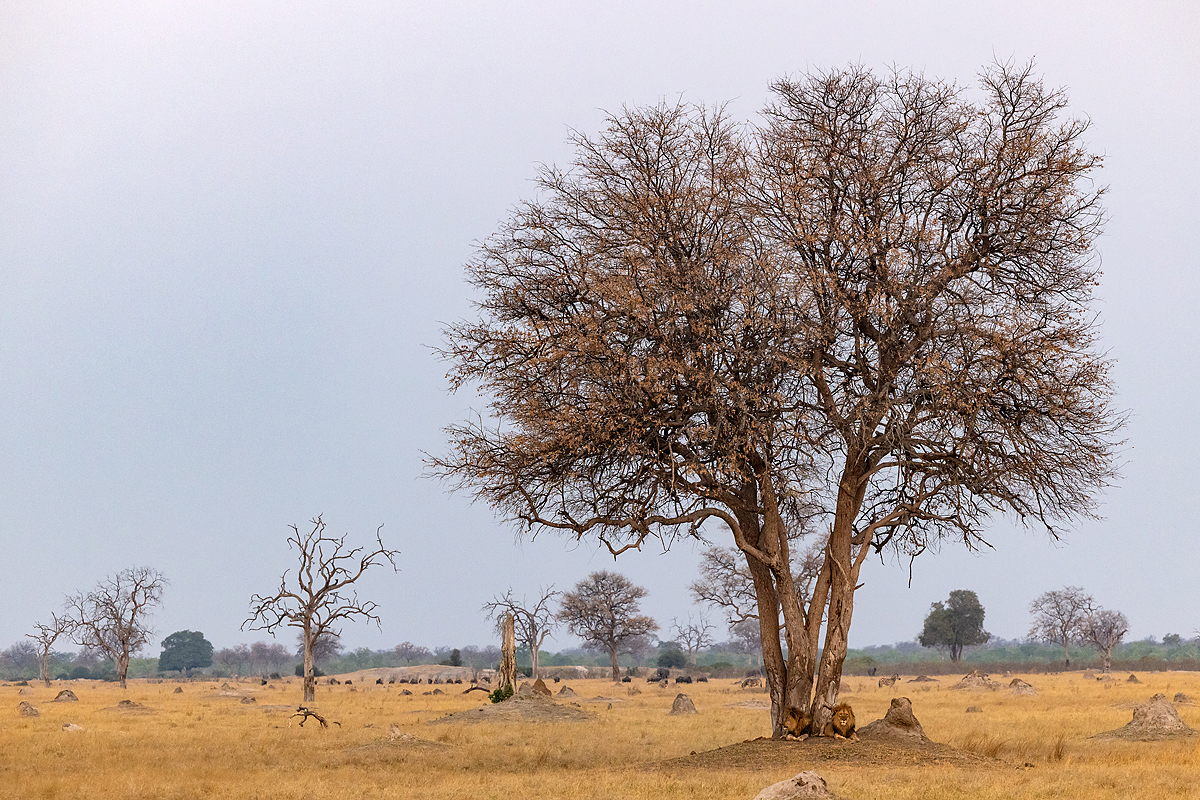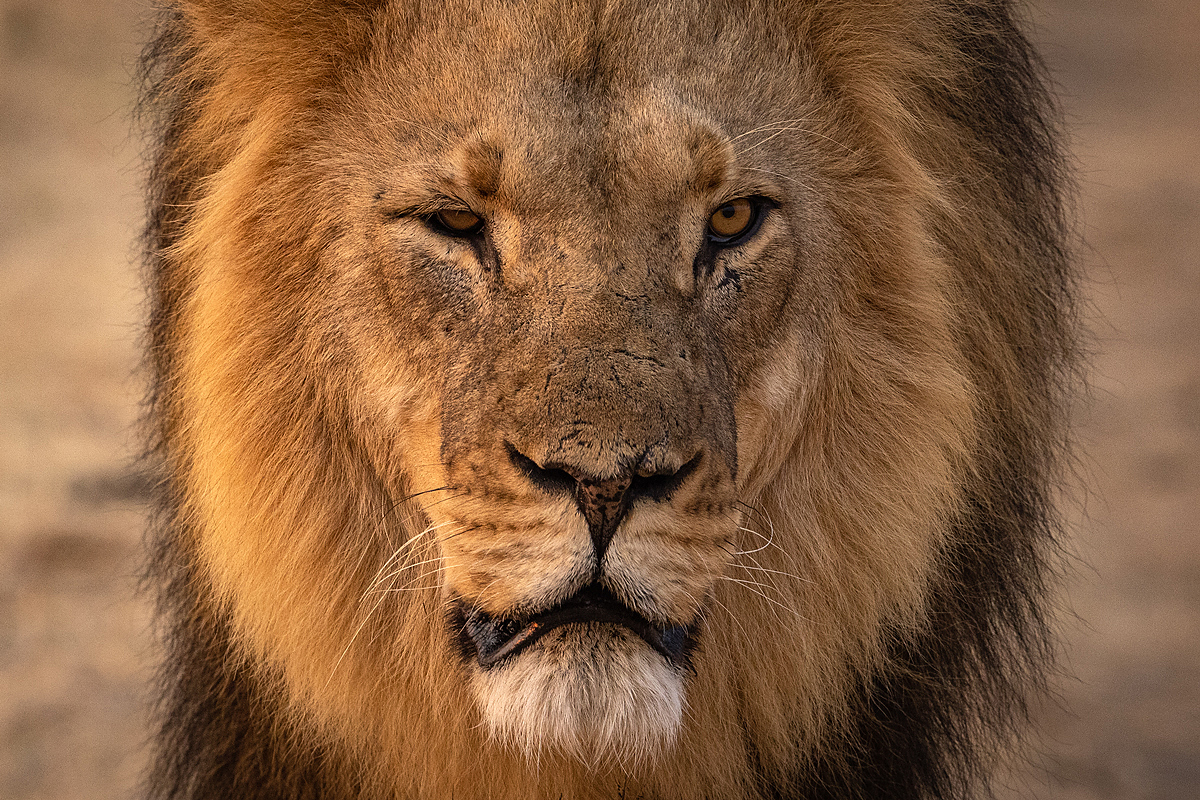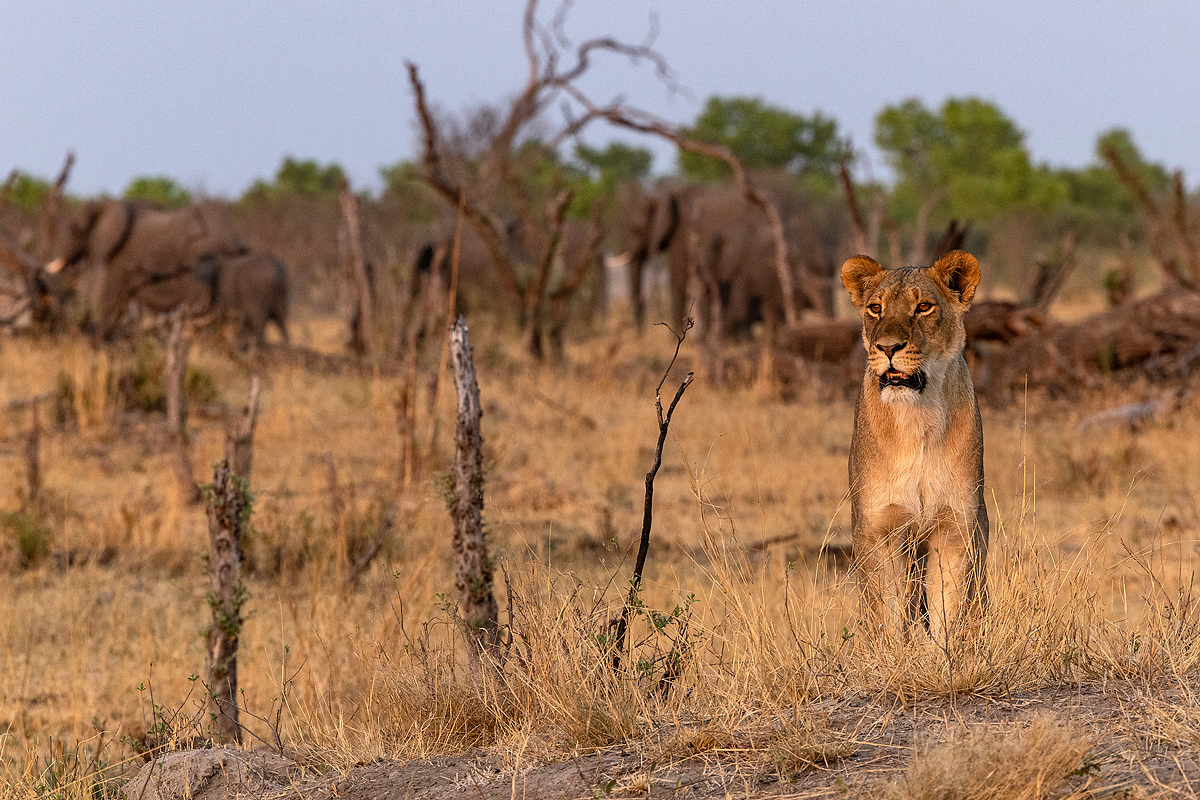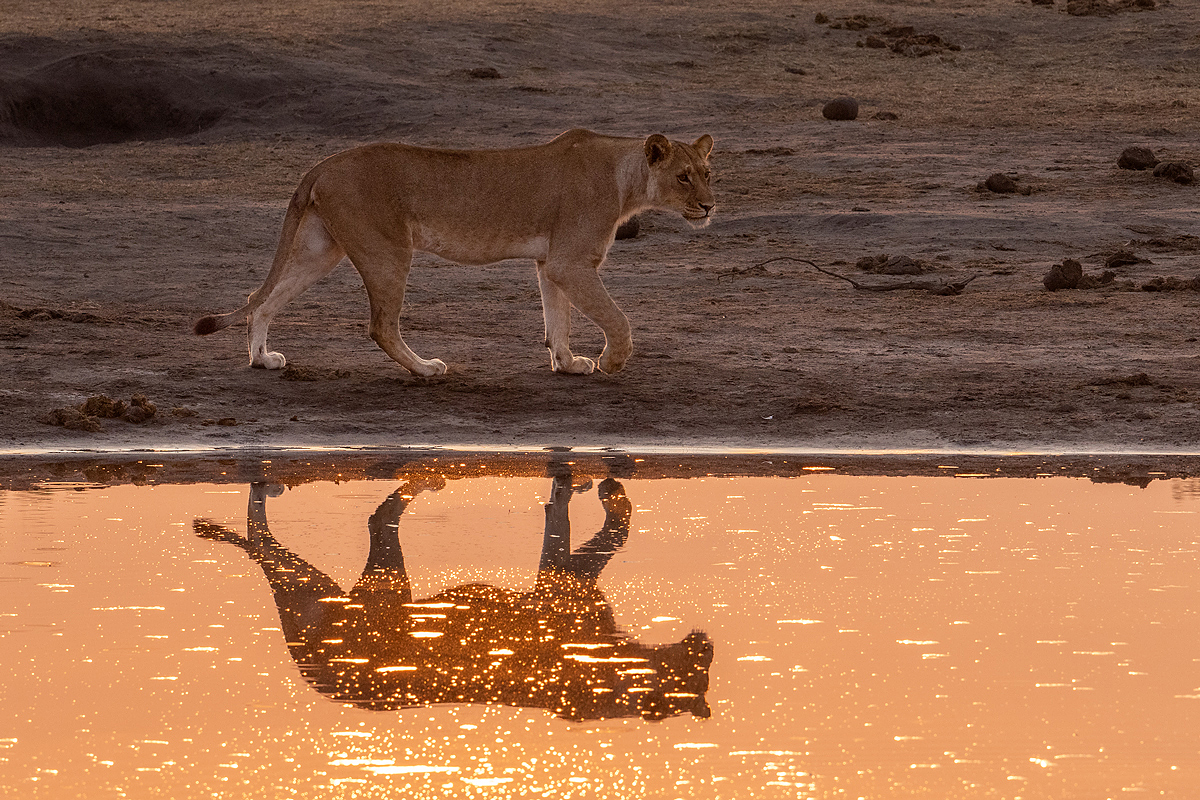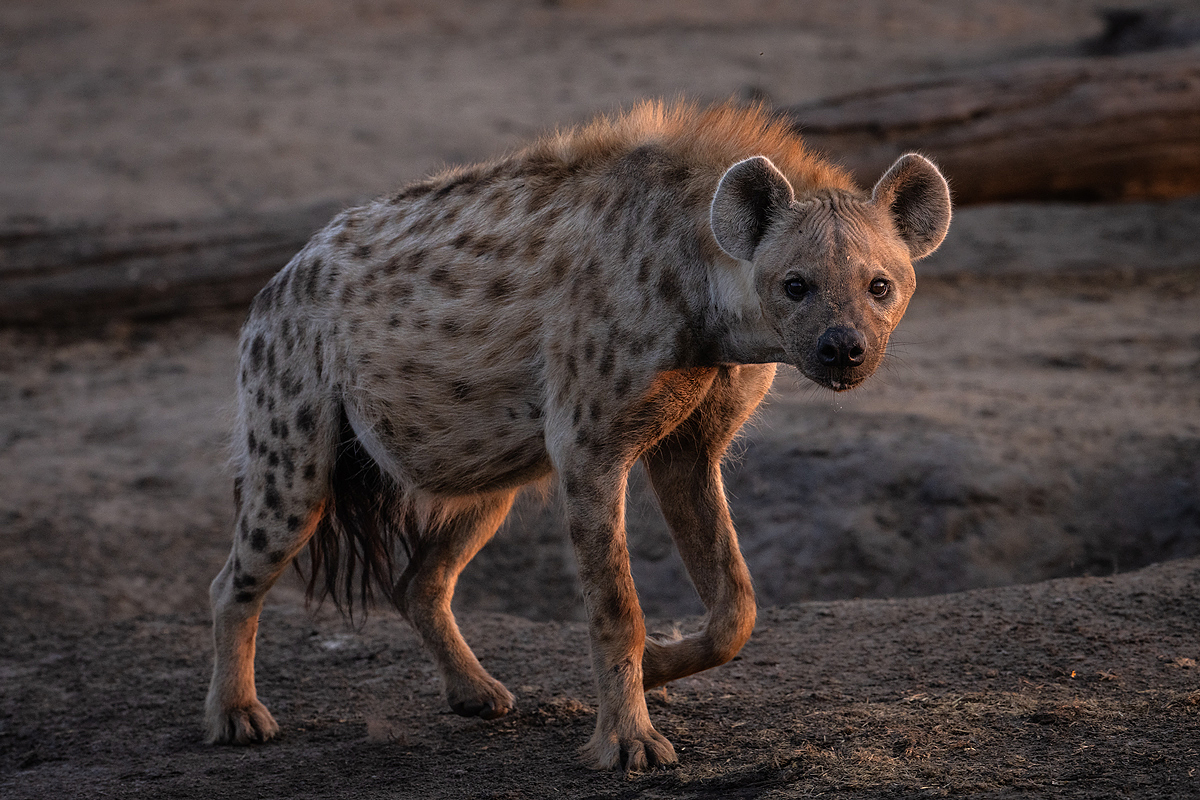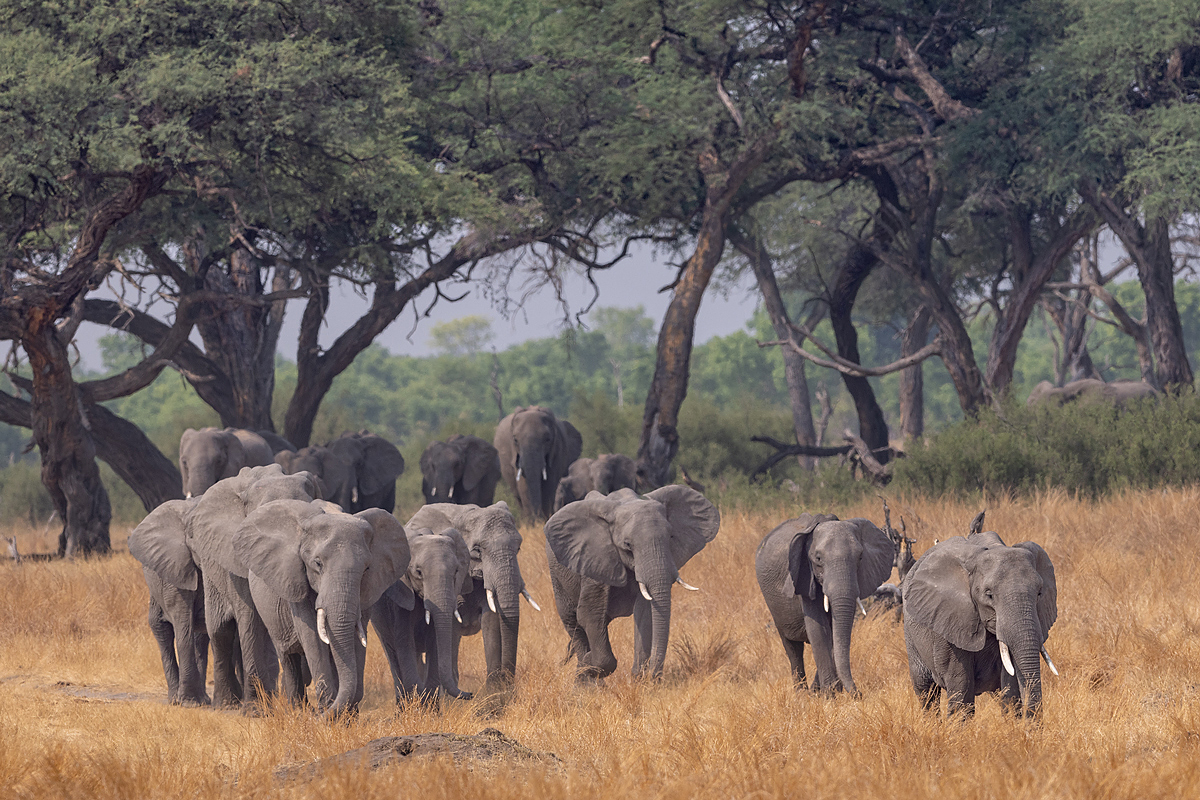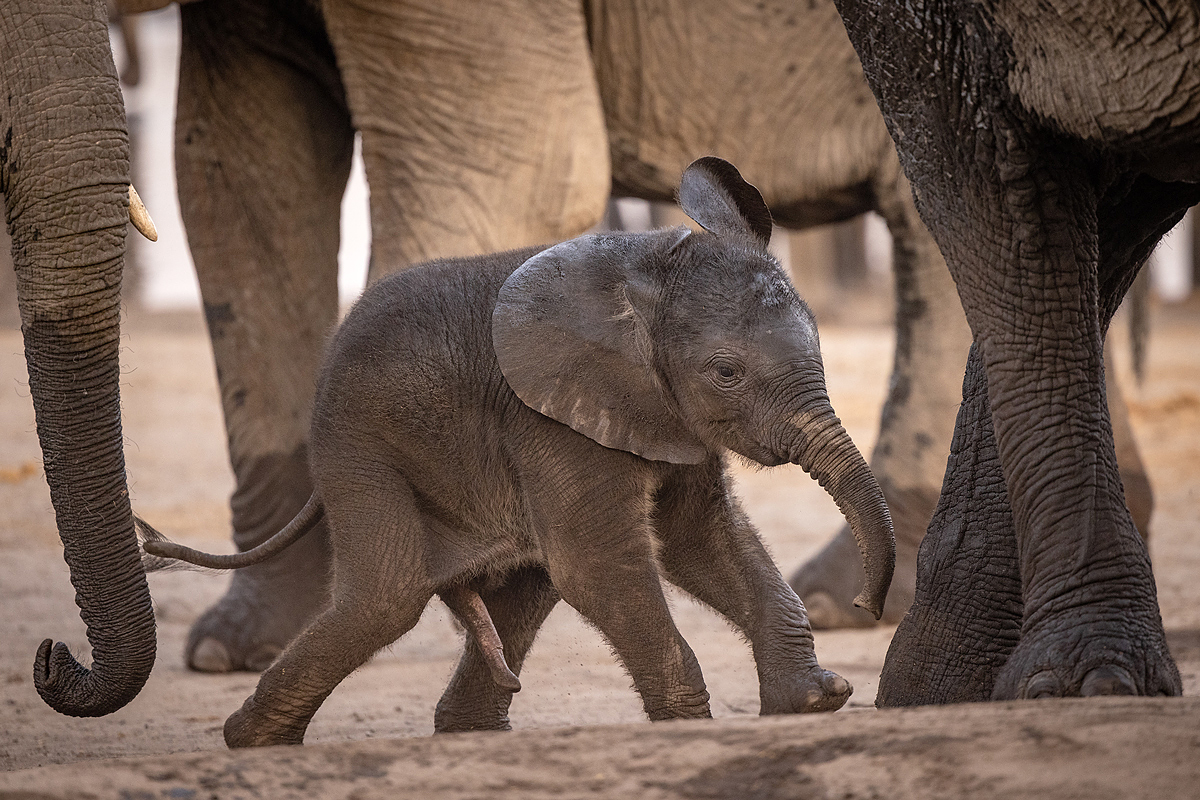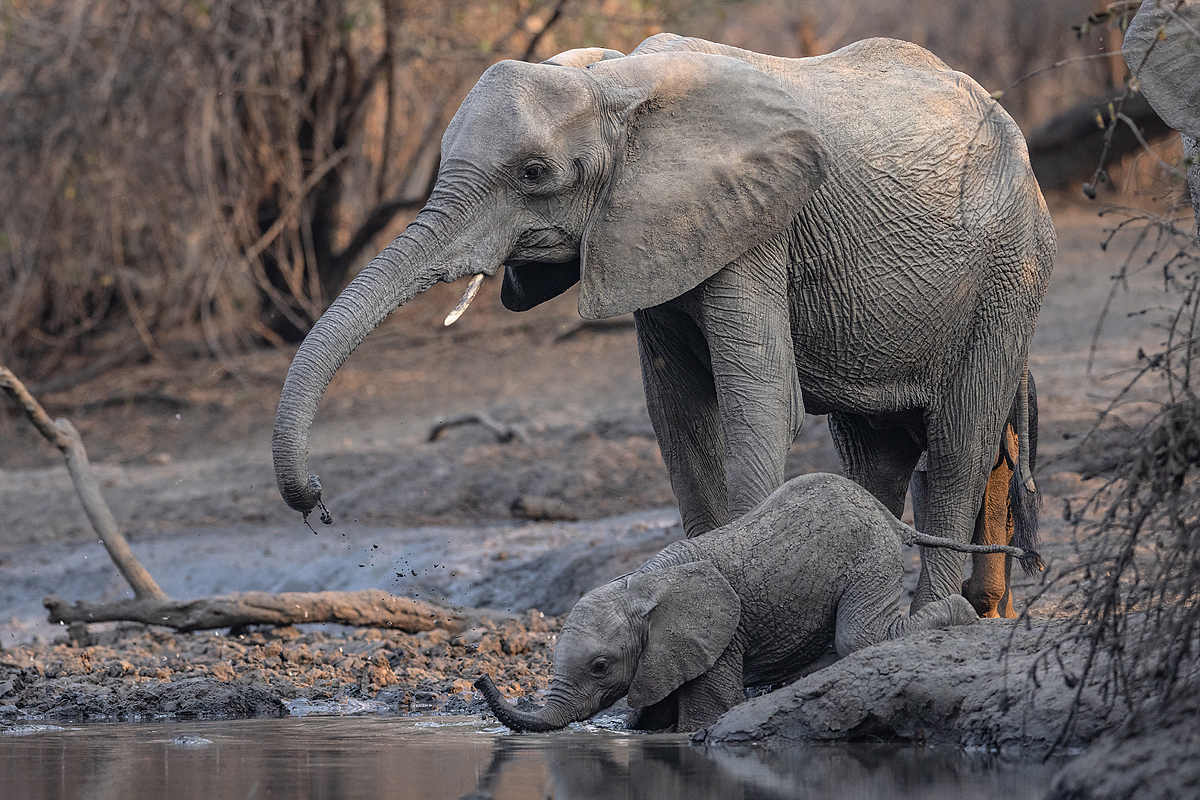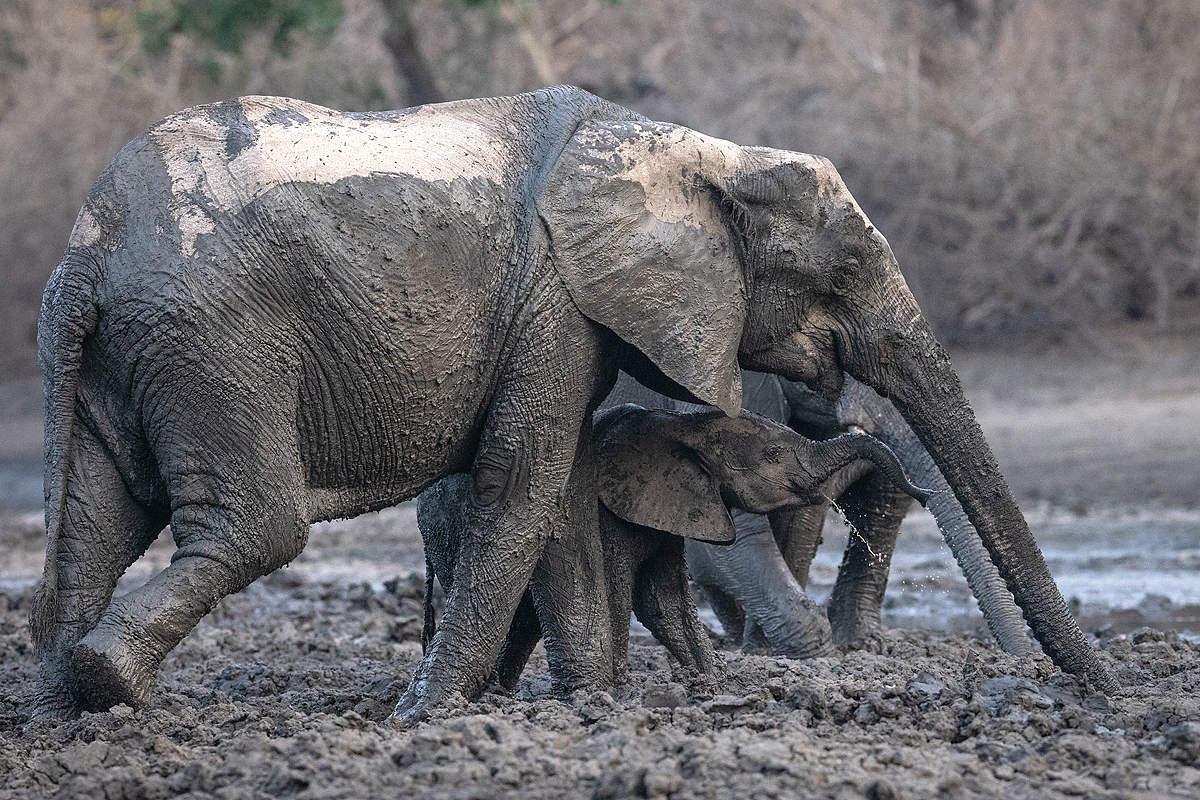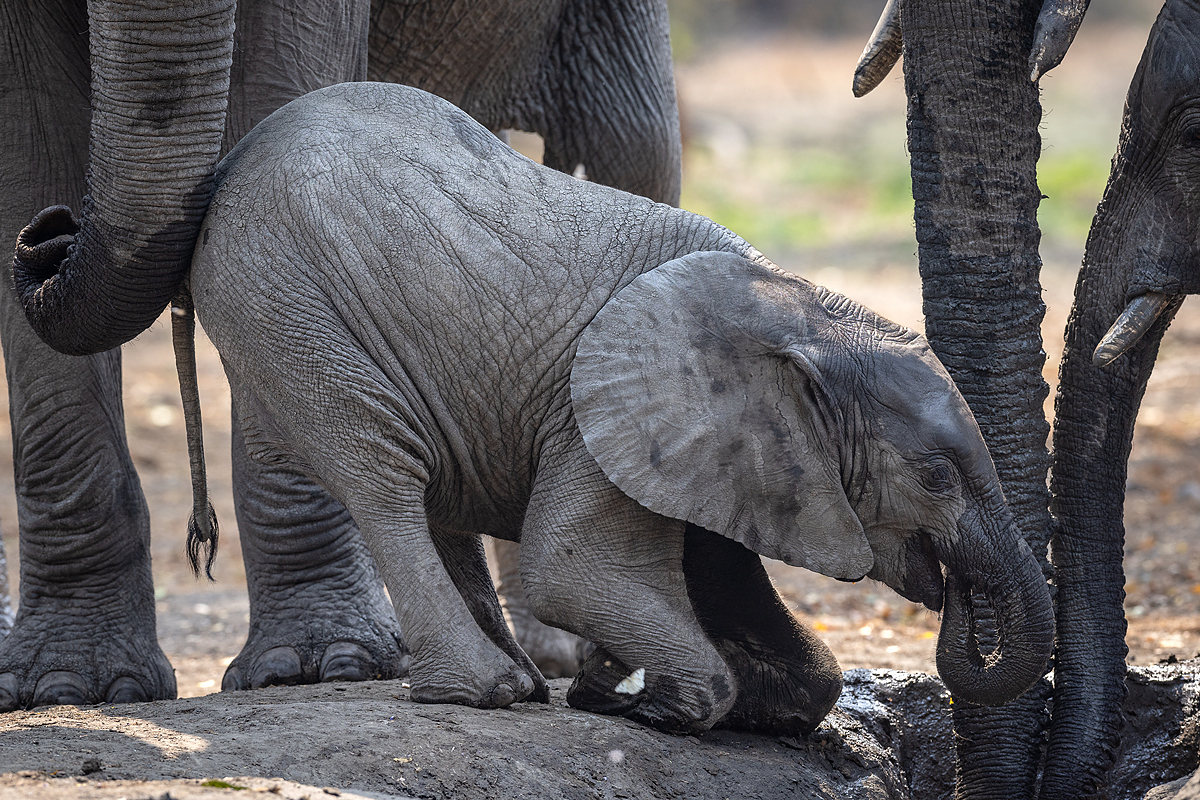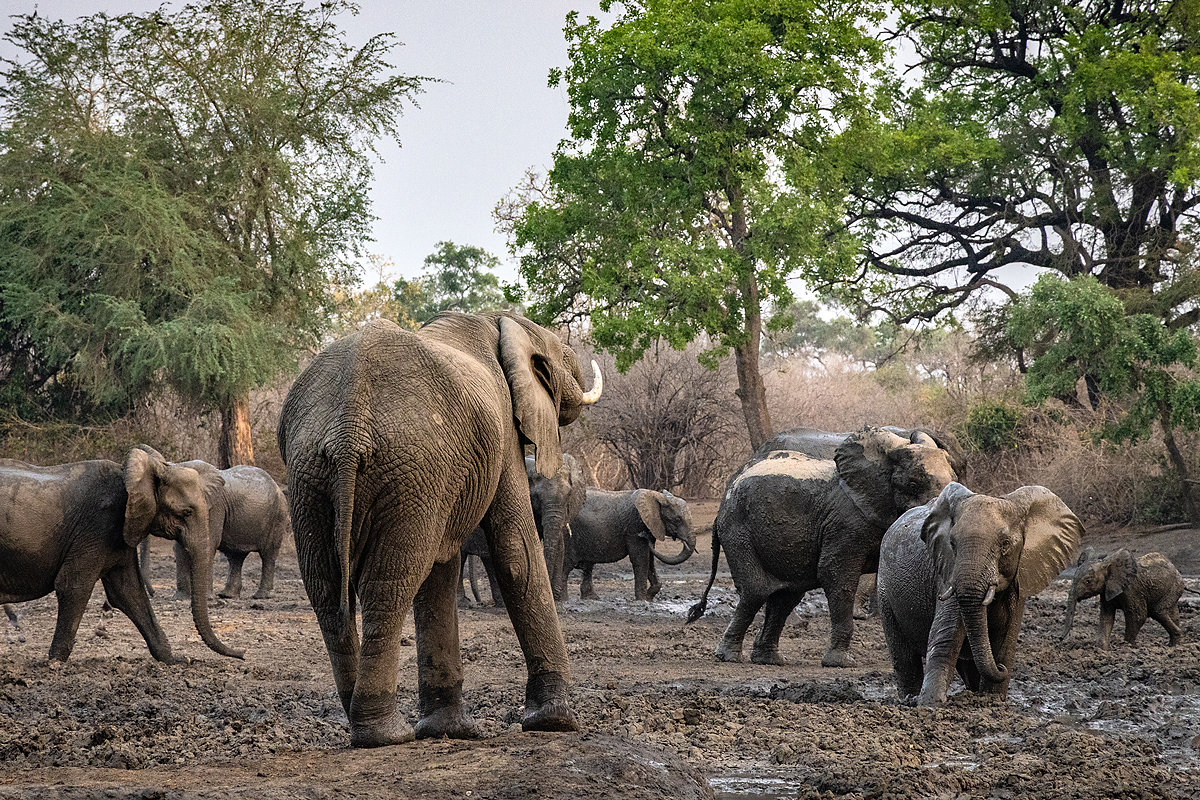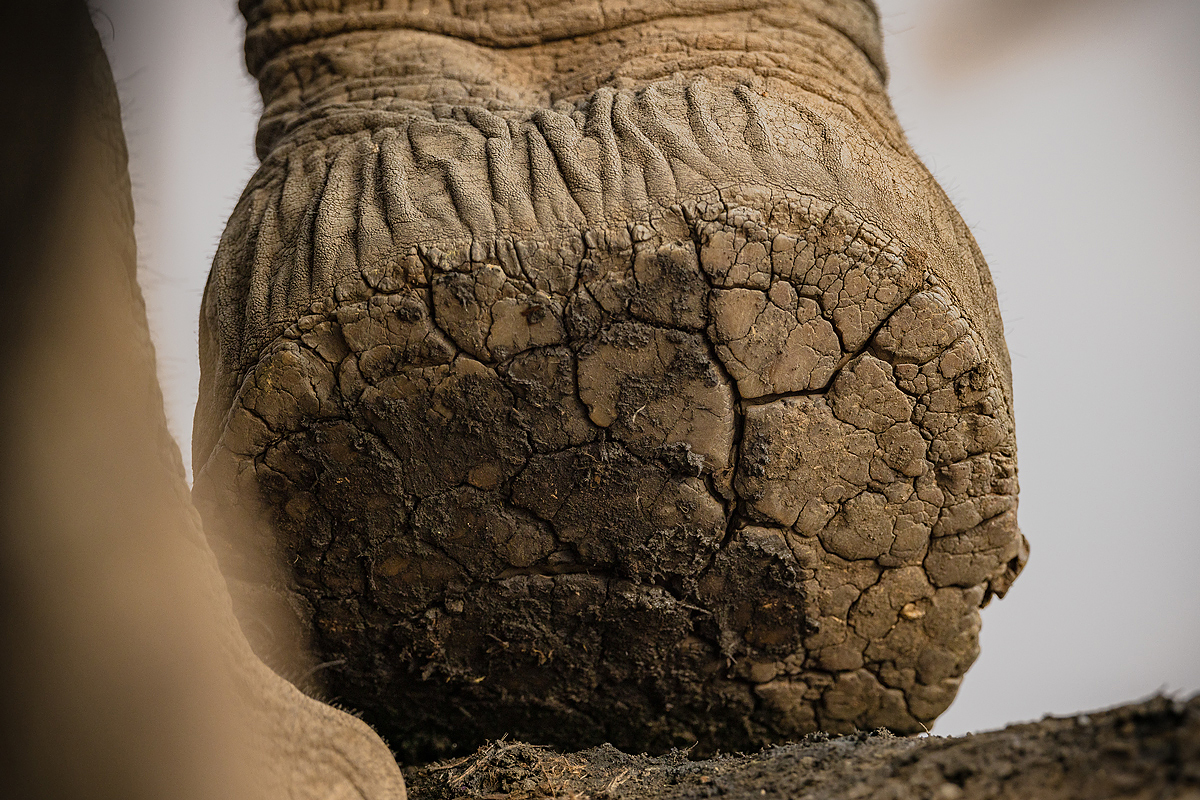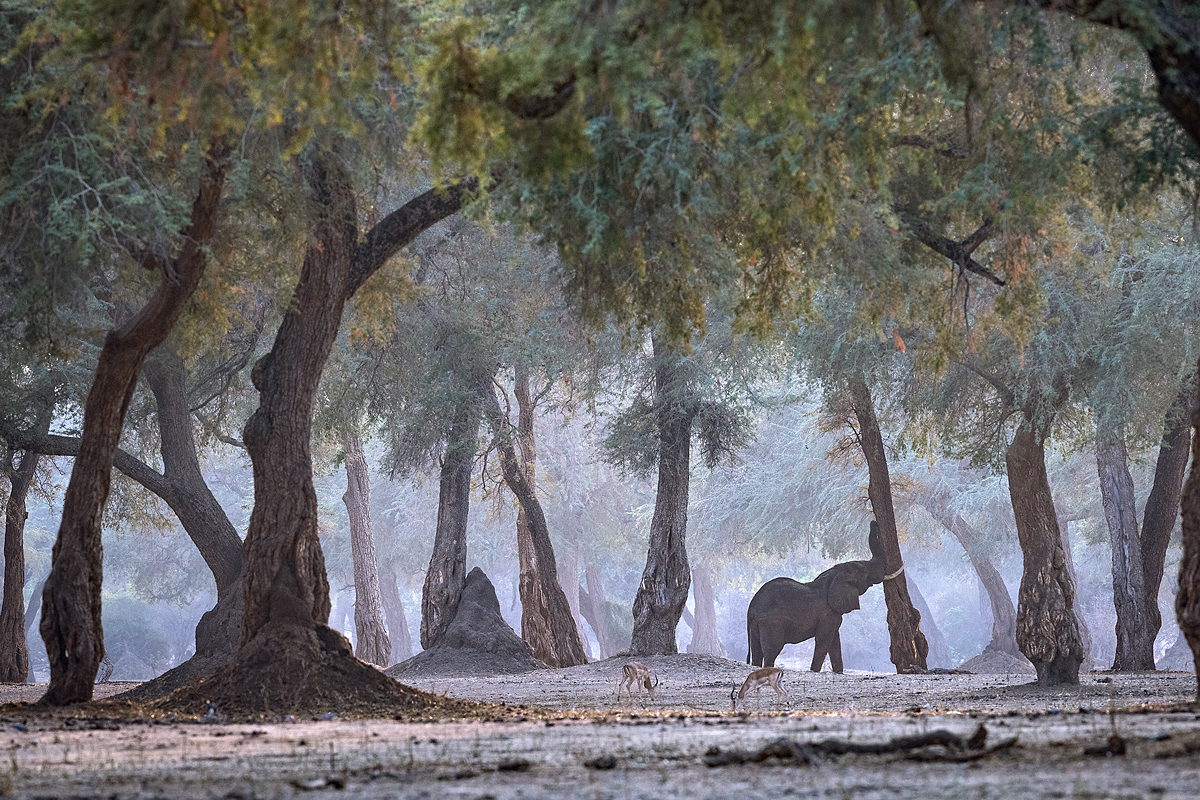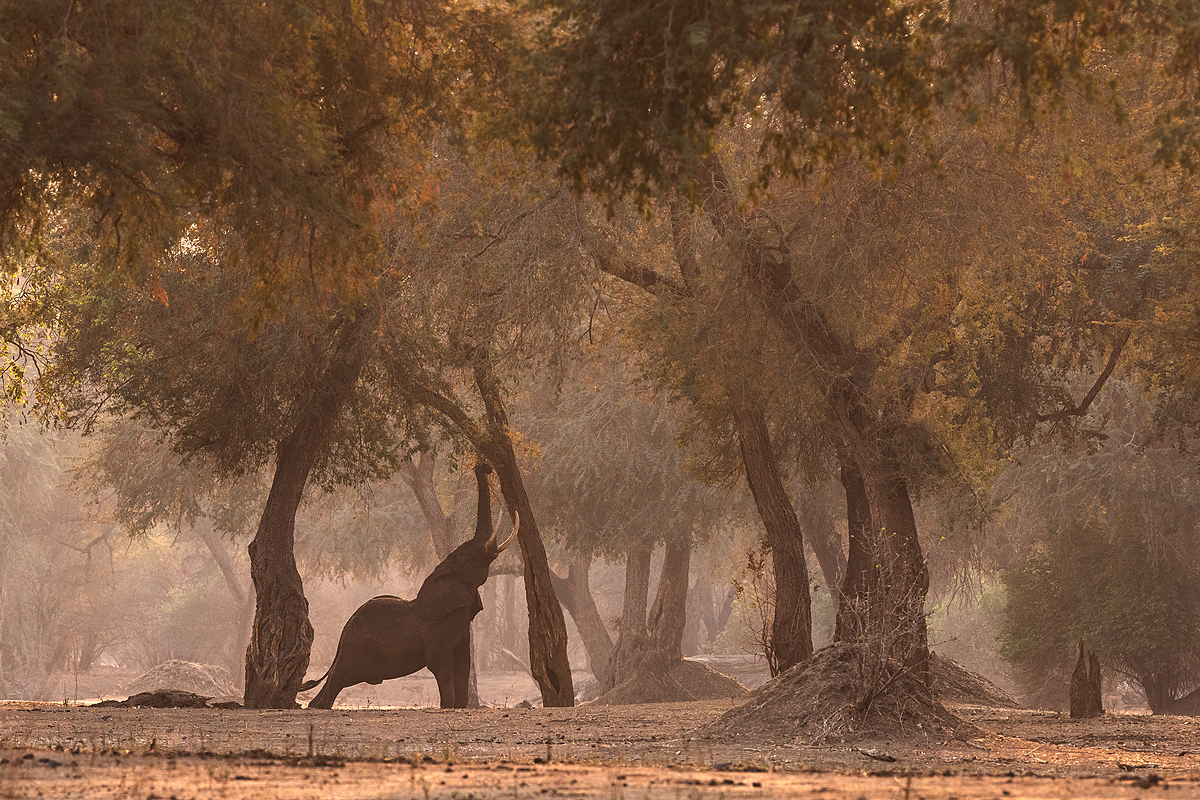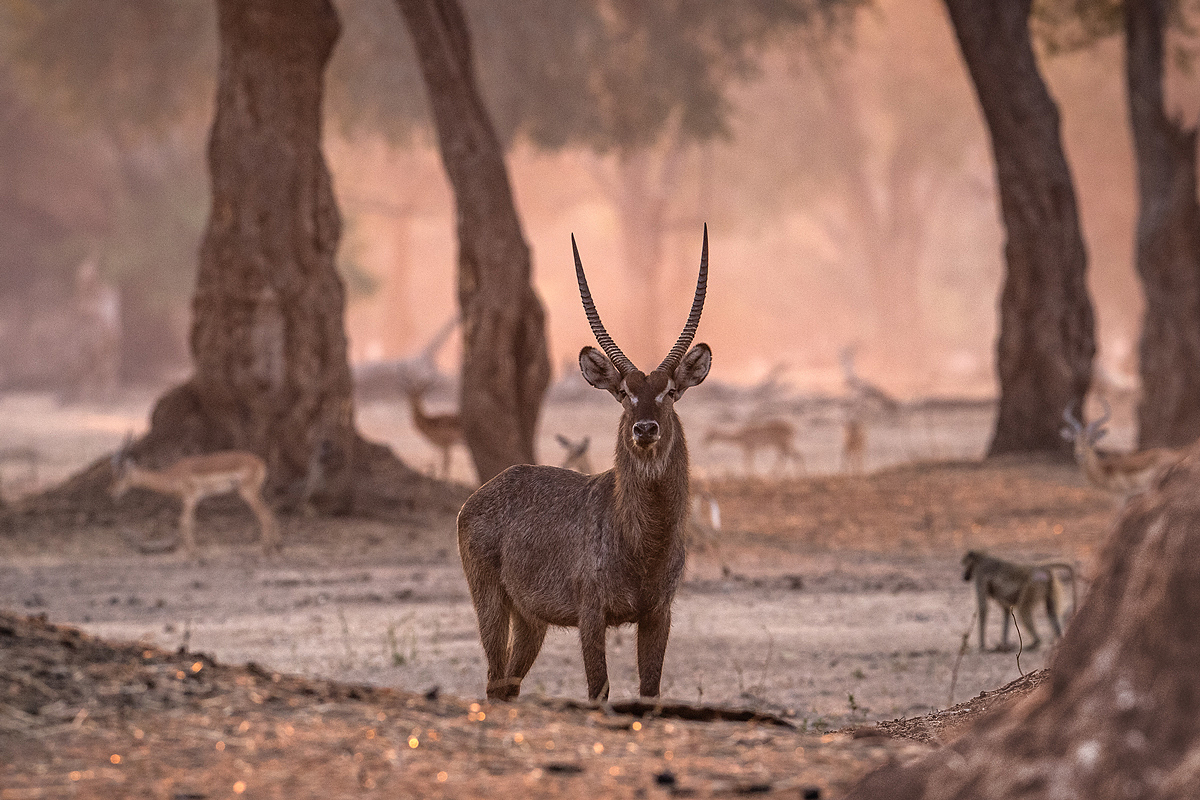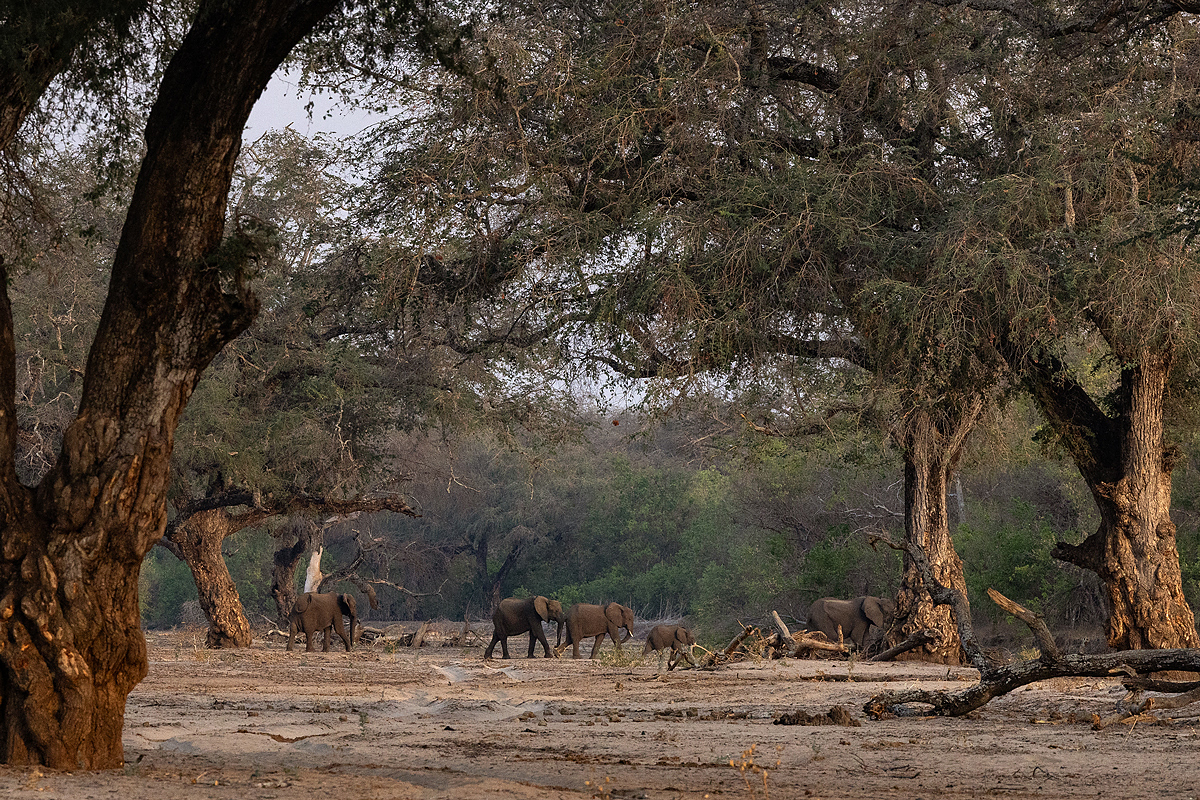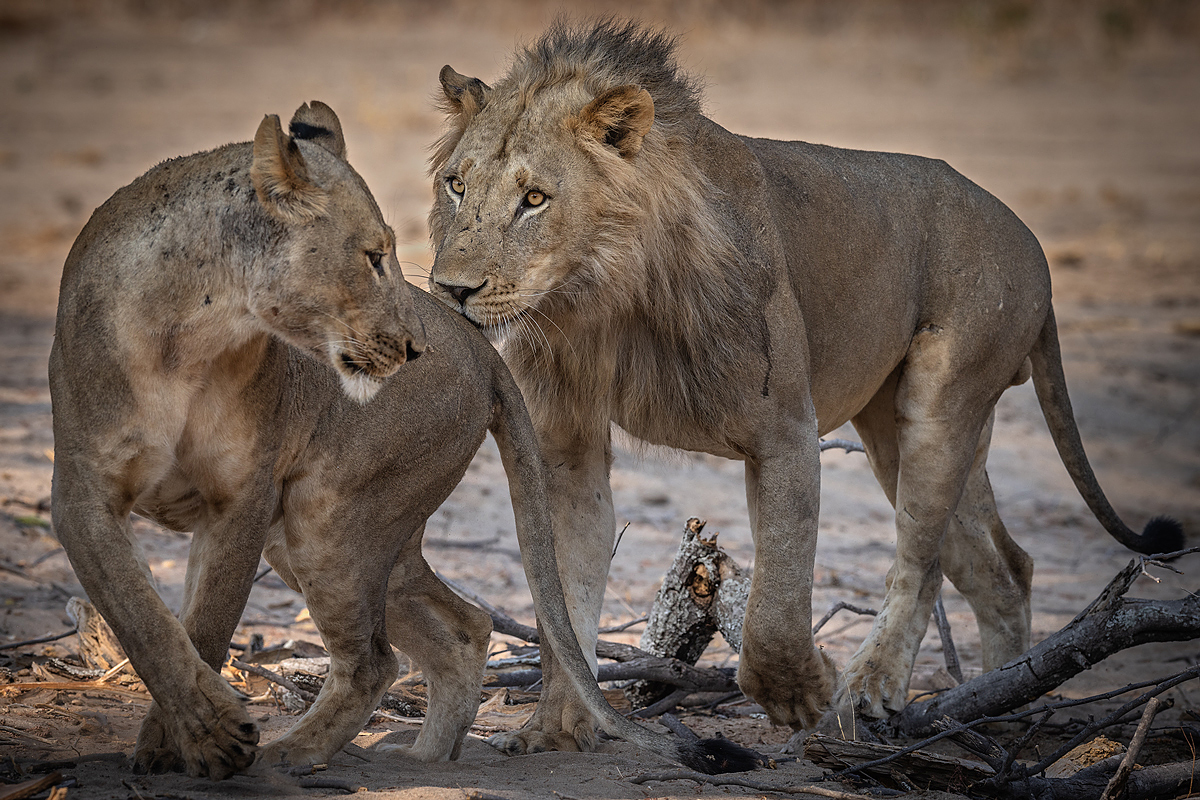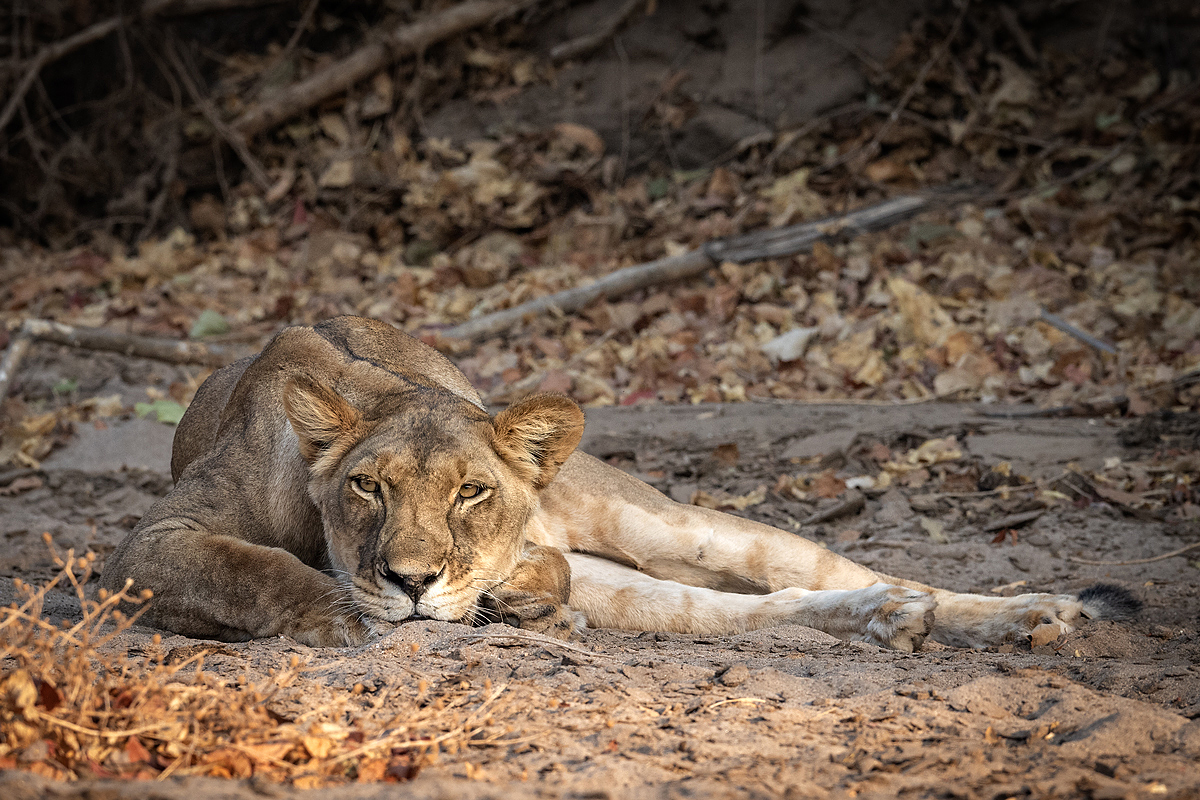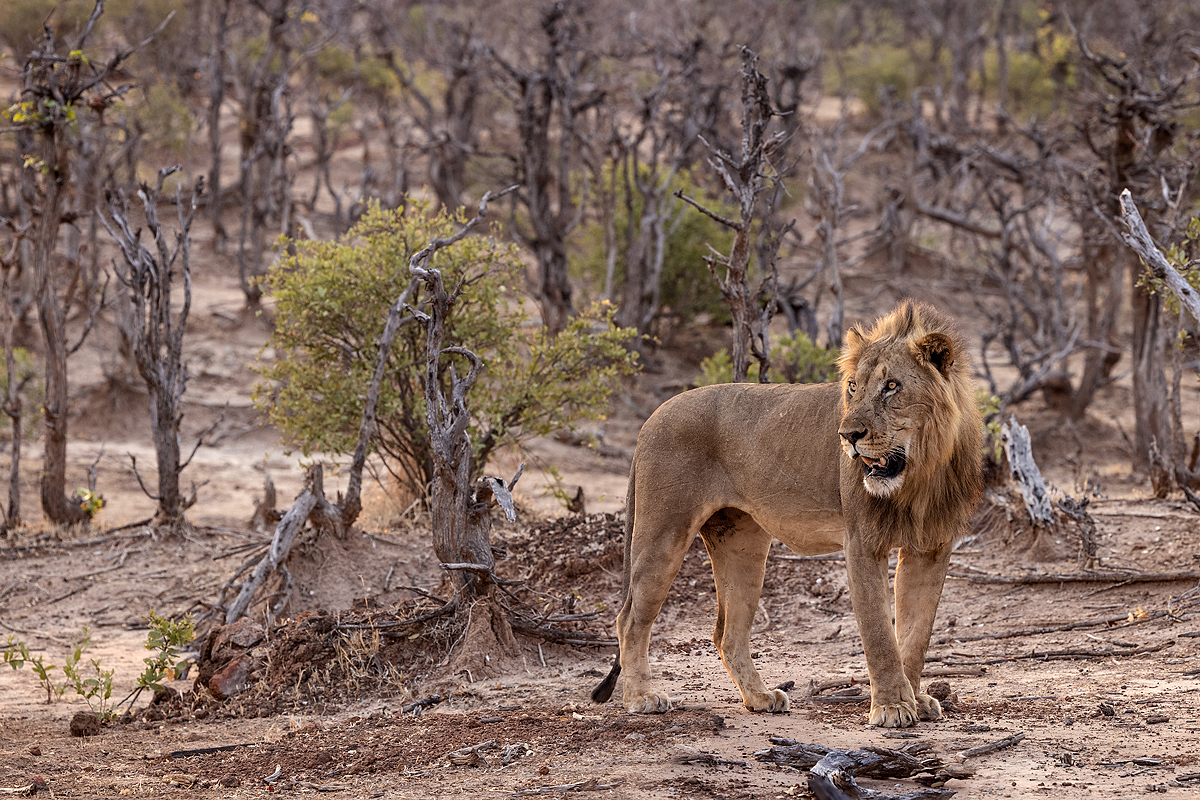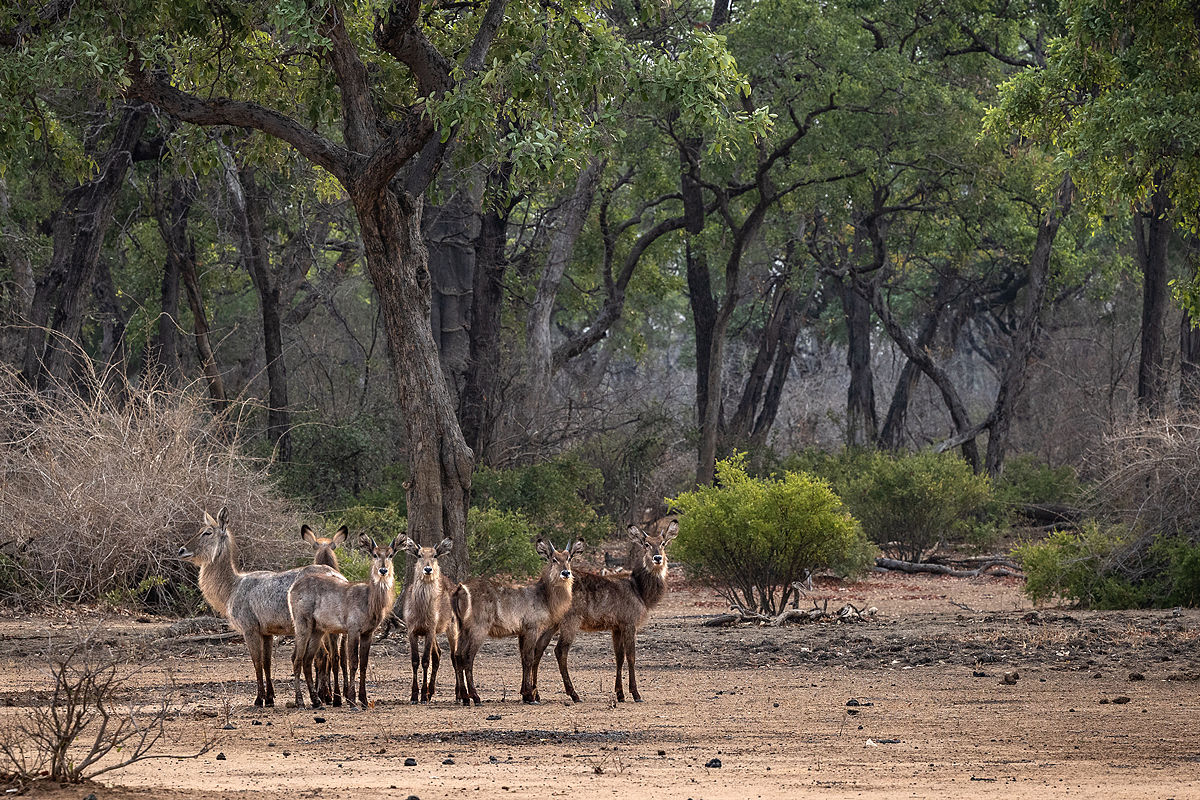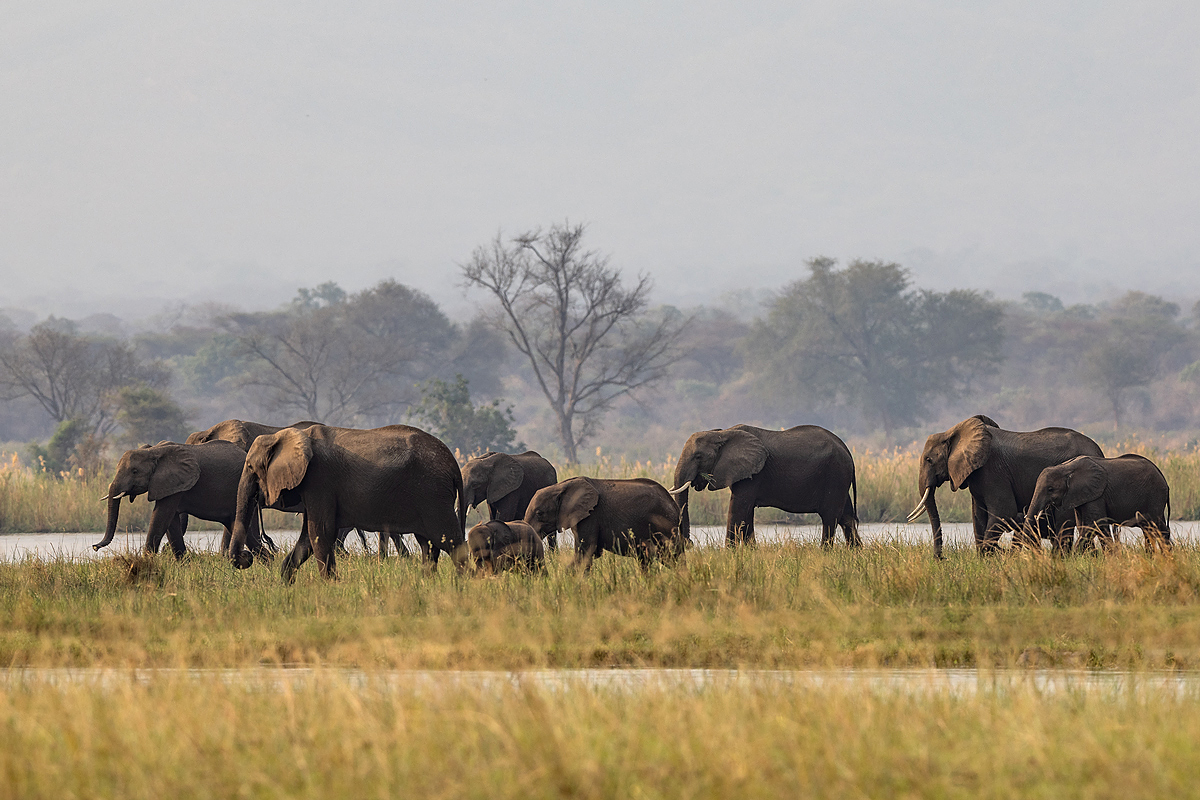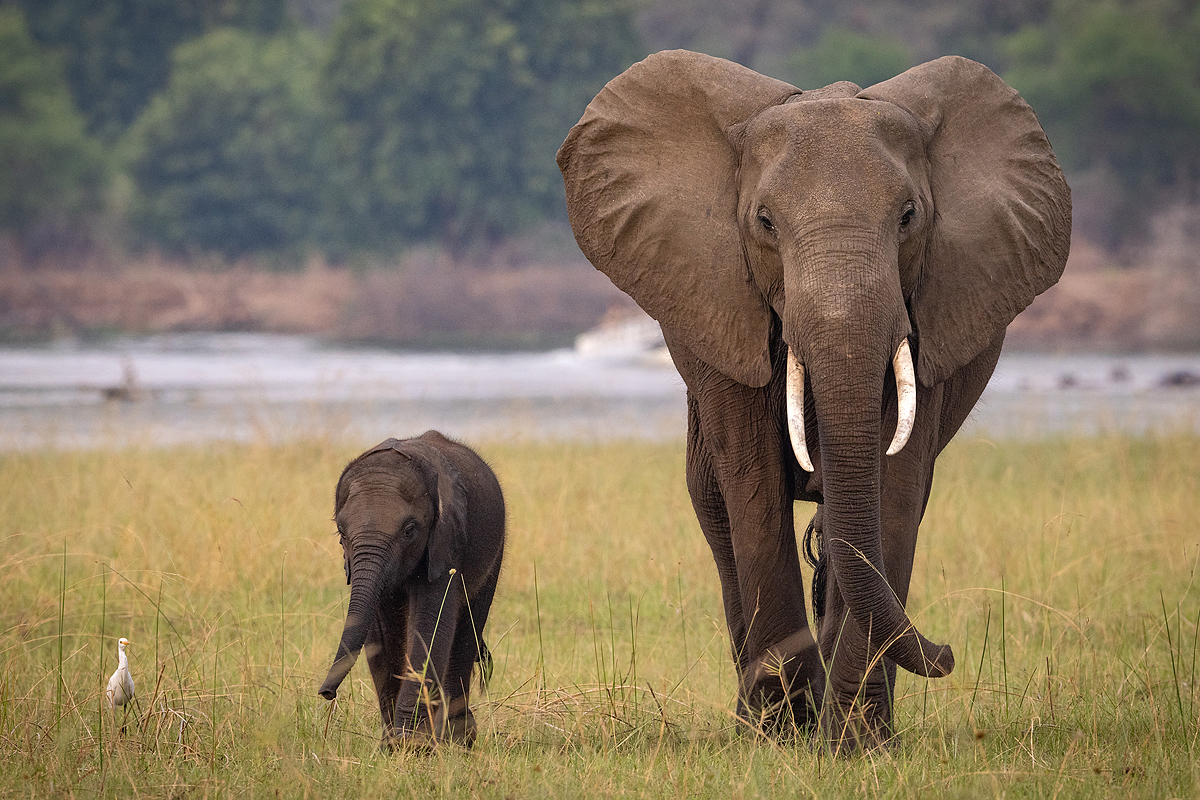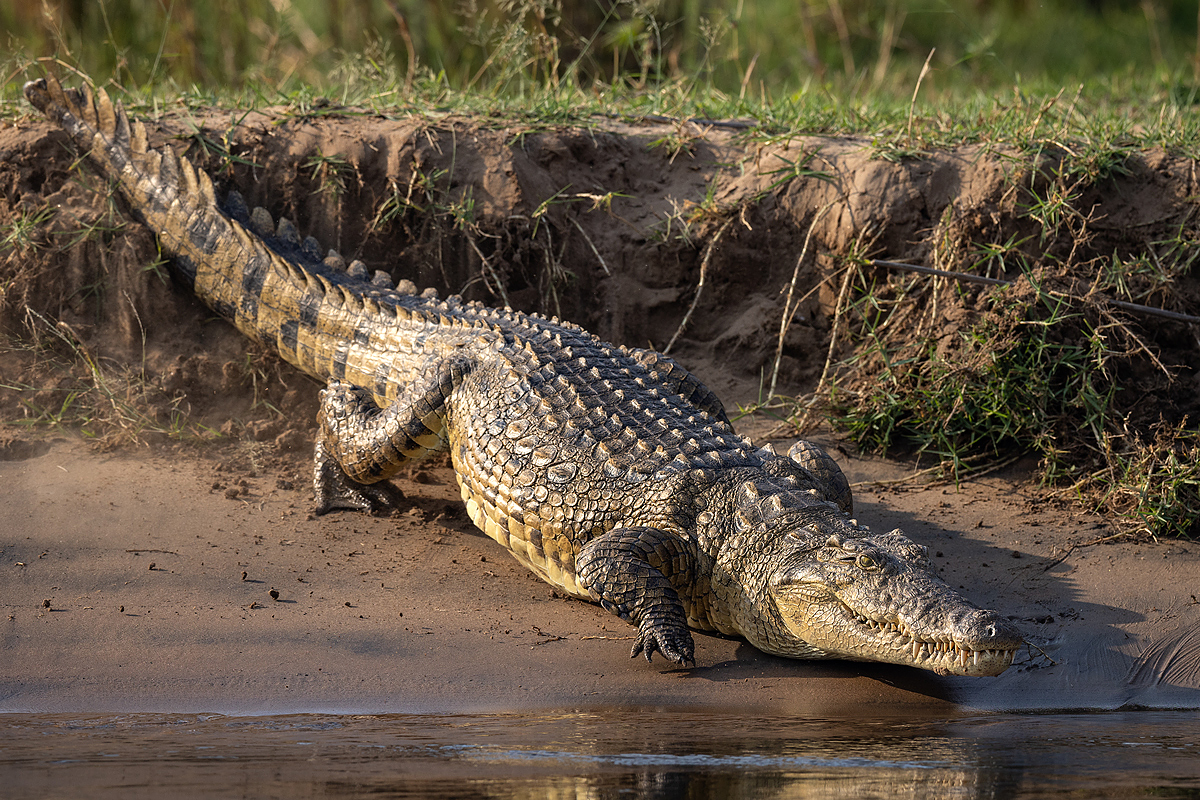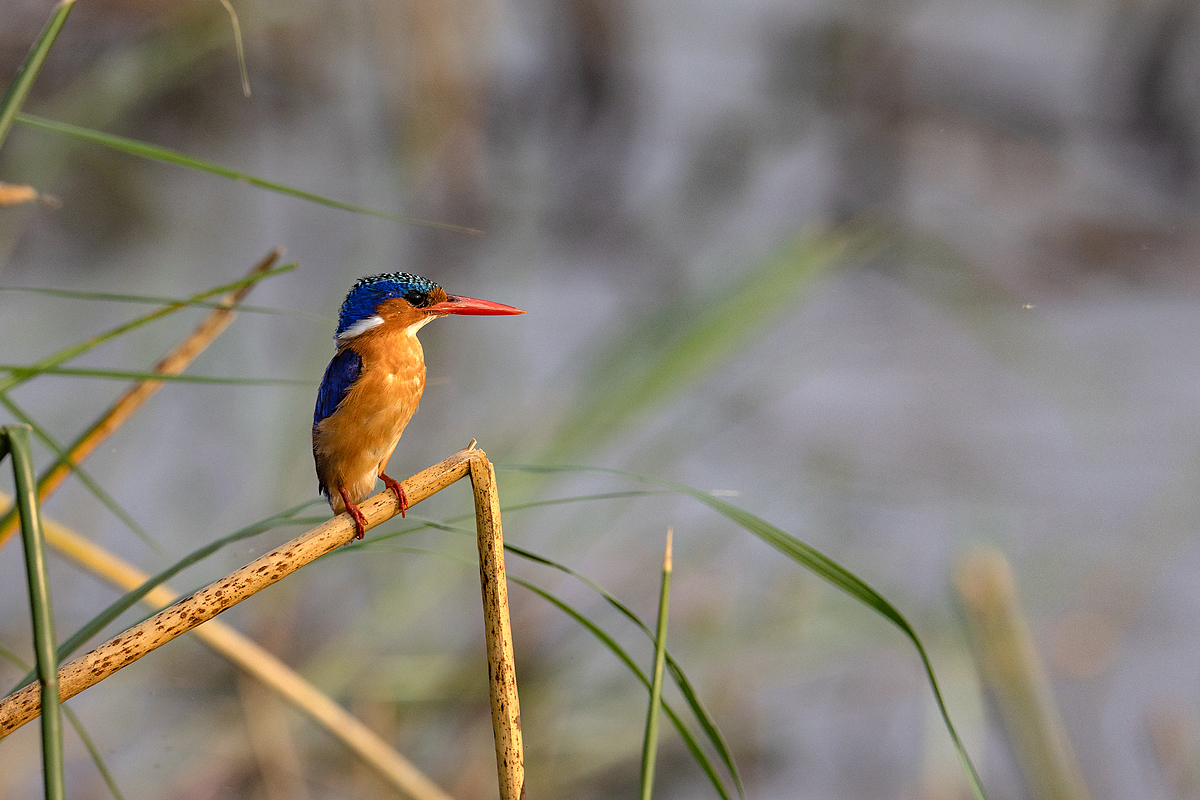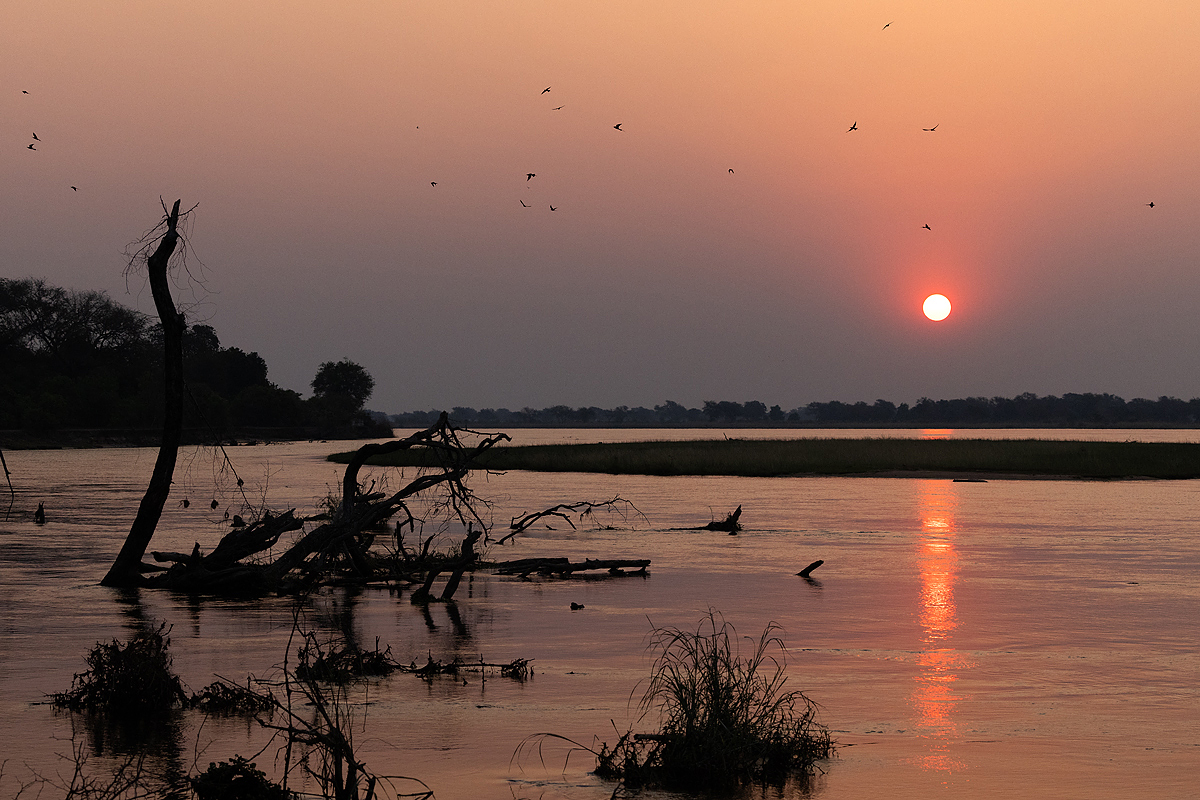Beating the heat in Zimbabwe
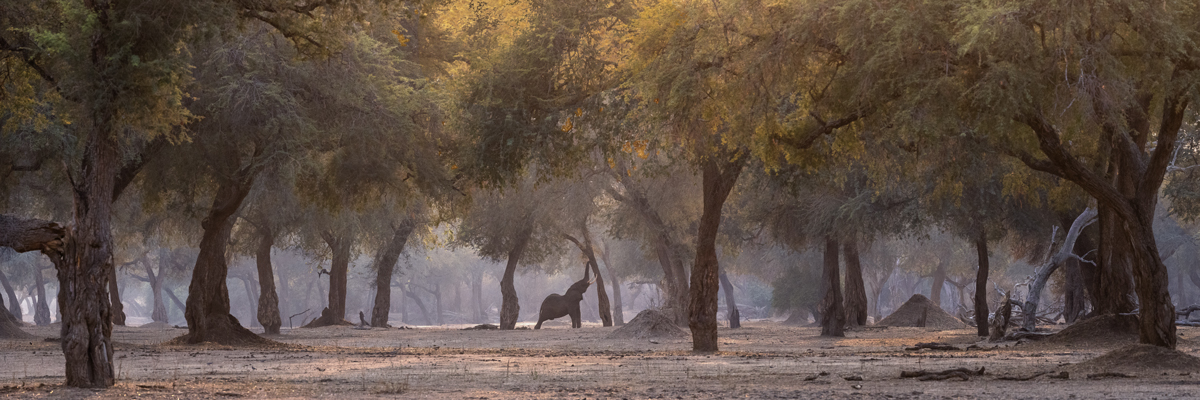
We visited Zimbabwe in October, often known as suicide month, because it is extremely hot, dry and dusty. Everything slows down and animals rest in the shade most of the day. Even the predators seem to be taking it easy. Everything in the landscape appears to be waiting for the start of the rains, announced by the first flush of green leaves. The animals congregate around the last remaining sources of water.
In Hwange National Park the river network and most of the natural waterholes dry up during the dry season. Therefore the animals are dependent on water that is pumped into the salt pans, using solar power. Elephant families walk in for a drink and a mud bath. They know exactly when the sun stands high enough to power the pumps and come to get the fresh water.
In Mana Pools National Park the mighty Zambezi is a reliable source of water. The floodplains with winterthorn trees represent an irresistable supply of dry-season browsing. These trees have a so-called “reverse foliage cycle”, meaning that they shed their leaves in summer, and grow them again as winter approaches. They develop an abundance of highly nutritious pods, beloved by elephants in particular. The result is that during the late dry season, most of the herbivores are crammed into the Mana floodplain.
The hazy blue Mana woodlands with elephants reaching for the high-up pods are very photogenic, but they also represent a very stressful time of year for the animals. Especially now climate change seems to make the rains less predictable and tourism has an ever growing impact on the ecosystem.
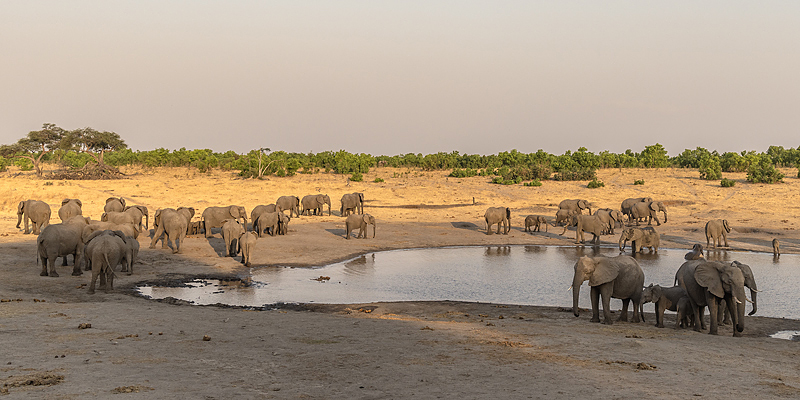
Hwange salt pans
Hwange is the Zimbabwe’s biggest national park. During the heat of the day lots of animals congregate around the shallow pans which provide water and form a natural salt lick for the animals.
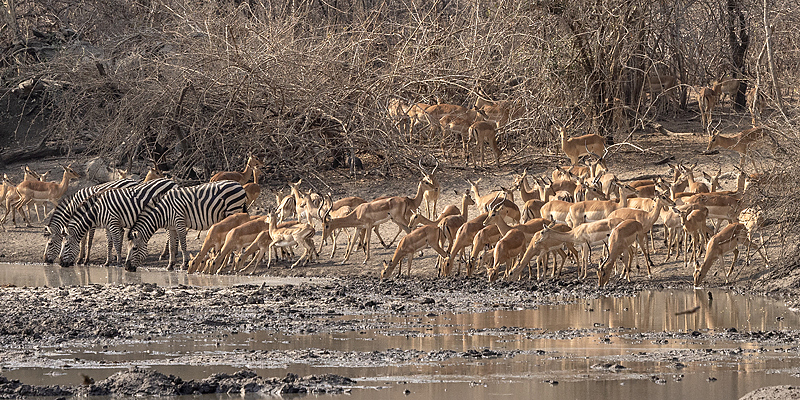
Armchair safari
Kanga is a small seasonal camp set near one of the few inland water sources in Mana Pools. Here the animals come down to the pan to drink at all hours of the day. A hide provides cover to take great close ups.
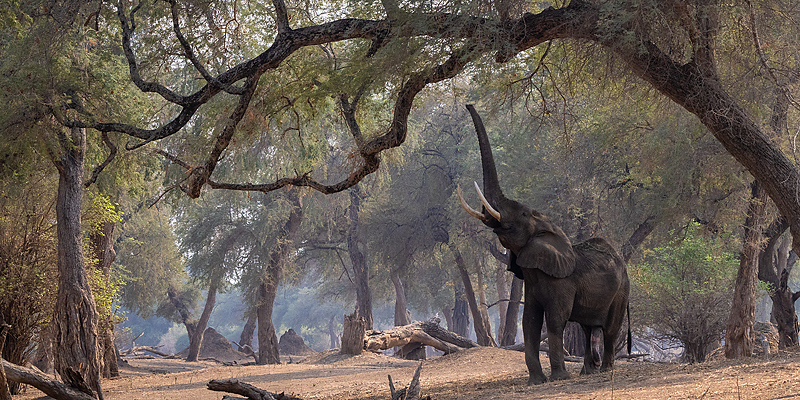
Zambezi floodplains
Mana Pools is famous for its floodplains and the “cathedrals” of ancient trees. Sadly the trees are struggeling, because the flow of the river has changed over the years.

